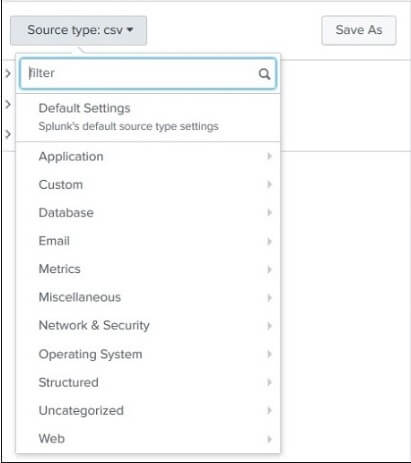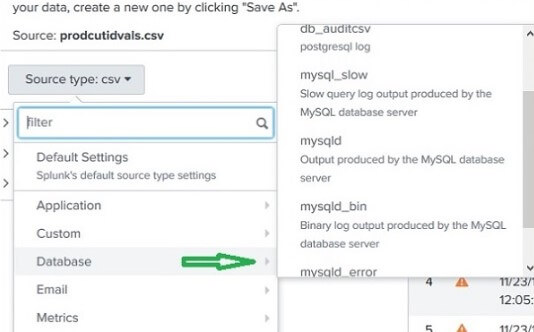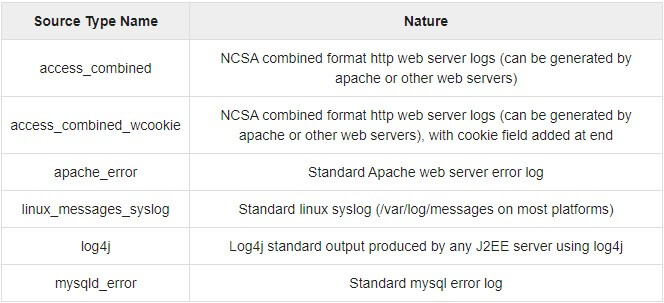Splunk Data Sources Type
Splunk sources are the source of data that we are going to use in the Splunk. There are various sources of data in Splunk that we are going to discuss in this section. Along with this, we will also learn types of data sources in Splunk, and sources types detection.
How do I get data?
Point it at a data source to get the data into your Splunk deployment. Say it about the source a little bit. Then that source becomes an input to data. Splunk indexes the data stream and transforms it into a sequence of occurrences. We will immediately access and scan for specific events. If the findings aren’t quite what we expect, the indexing process can be tweaked until they are.
When we have Splunk Enterprise, data can be on an indexer (local data) or another computer (remote data) on the same network. The data remains in your corporate system if we have Splunk Cloud, and we transfer it to your Splunk Cloud deployment. Using network feeds, or installing Splunk forwarders on the hosts where the data originates, we can get remote data into your Splunk deploy.
Splunk offers applications and add-ons with pre-configured inputs for data sources such as Windows or Linux, Cisco security data, Symantec Blue Coat data, etc. Look for an app or add-on which suits your needs on Splunkbase. Splunk Enterprise also provides hundreds of data source recipes, such as web server logs, Java 2 Platform, Enterprise Version (J2EE) logs, or Windows output matrix. We can get to these from Splunk Web’s Attach data page. If the recipes and apps do not cover your needs, then we can use the functionality of the general input configuration to determine your specific data source.
Types of data sources
Splunk offers tools for configuring various kinds of data inputs, including those unique to application needs. Splunk also provides the tools to configure input forms of any arbitrary data. In general, Splunk inputs can be defined as follows:
- Files and directories
- Network events
- Windows sources
- Other sources
Files and directories
Most data comes straight from files and folders. To get data from files and directories, we can use the files and directories to track input processors.
Network events
Data from system log files or any other application that transmits over the TCP protocol. Splunk Enterprise can index data from any network-port. It can also index UDP data, but for increased reliability, we should use TCP instead whenever possible.
Splunk Enterprise can also accept SNMP events and catalog them.
Windows sources
Splunk Cloud and the Splunk Enterprise Windows implementation support a large variety of Windows-specific inputs. Splunk Web allows us to configure the following input forms which are unique to Windows:
- Windows Event Log data
- Windows Registry data
- WMI data
- Active Directory data
- Performance monitoring data
To search and index Windows data on a non-Windows instance of Splunk Enterprise, we must use a Windows instance to gather the data.
Other data sources
Splunk software also supports different kinds of data sources. For example:
- Metrics
- First-in, first-out (FIFO) queues
- Scripted inputs
- Modular inputs
- The HTTP Event Collector endpoint
Source Type Detection
All the data that are inserted into the Splunk are first judged by the inbuilt function of the software that categorizes it automatically into pre-defined categories. For example, it the log from any server is inserted into the Splunk platform, then it atomically classifies it and creates all the necessary fields.
The feature of automatic detection of the fields of the data type is known as Source Type Detection in the Splunk platform. To achieve it, Splunk uses a build-in source type that is known as the pre-trained source type.
The feature makes things easier for the user as he does not have to manually set the data type and fields for the incoming data.
Below is an image that contains the list of all supported source type by the Splunk Platform. We have also explained the significant categories earlier in this tutorial.

The Sub-category in the source type
Now when we choose any category in the source type drops down the list, then there we also have an option to choose from many different sub-categories.
For example- If we choose the source type as Database in the main category. We have plenty of options to select further from the sub-category and all the supported database sub-category. We can scroll down and choose the appropriate one. For reference, we can have a look at the image below.

Pre-trained source types in the Splunk platform
Below is the list of some important pre-trained source types that are used for the automatic source type detection in the Splunk platform for the incoming data.
Some pre-trained sources are not recognized automatically by the Splunk platform but can manually be assigned by the help of Splunk web or input.conf.
It is a very good practice to assign a pre-trained source type to the incoming data in our Splunk platform as the Splunk platform knows very well how to index the type of the pre-trained source for effective searching.
However, if your data still does not match the source type, then we can also create your source type manually and assign it to your data.

